A few pictures from a week ago, May 30, and also from yesterday, June 5, as what’s blooming and in what abundance changes rapidly–especially in the hot, dry weather we’re having. (We did get 3/10 of an inch of rain. It barely wet the ground.)
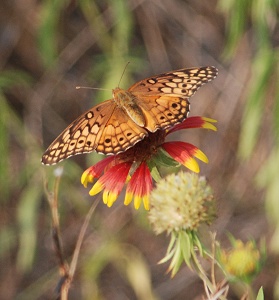 Variegated Fritillary, Euptoita claudia, on Gaillardia
Variegated Fritillary, Euptoita claudia, on Gaillardia
The gaillardia were already past peak on May 30, and are even less obvious this week, though not all the seeds are ripe.
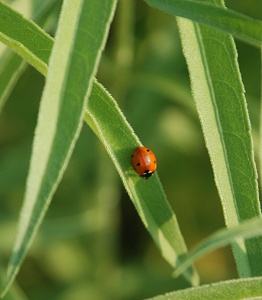 Ladybird beetle on Maximilian sunflower leaves
Ladybird beetle on Maximilian sunflower leaves
The Maximilian sunflower mounds are already knee high–this large multi-flowered sunflower won’t bloom until August or September, when it’ll send up multiple stalks, each covered with flowers. But I love the architectural leaf patterns, and this time a little red “ladybug” showed up against the green.
Shortly before sundown on May 30, I was walking back along a mowed path through the prairie, accompanied by abundant little white moths. This one let me get close enough for a picture–love the plumy antennae:
A few more yards, and I came upon a coreopsis plant that had plain yellow ray flowers, rather than marked with mahogany near the disk, and quickly took a picture. Too quickly–I failed to notice the three different tiny insects on it until I got the image into the computer. You can’t ID what you don’t have in focus!
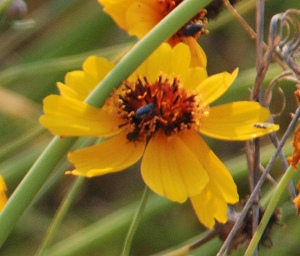 Missed opportunities, on all-yellow Coreopsis
Missed opportunities, on all-yellow Coreopsis
This weekend’s expedition started out with a saving throw–a little moth fluttered down from the back door just as I started out. It landed on the back step and I knew right away it was a species not yet on our list.
This is a “Connubial Underwing” and I must say that the scientist(s) who named moths in this genus had a fixation on women and marriage. Take a look at the list of species names. Though the ID was confirmed by a member of the Texas Lepidoptera Survey, I’m pleased that I was able to narrow down the many-many possibilities to the right one. And not only is it new to our list, but it’s not been reported before in this county. On his recommendation, I’ve shipped the images off to the national database at Butterflies and Moths of North America as an addition to the county checklist.
After that, almost anything I saw out in the field was gravy. We still have a lot of basketflowers (more than last year, thanks to the winter rains, and in more places than they used to exist on this property–thank you, seed-eating birds!) and lemon horsemint; gaillardias are mostly gone but not entirely. What really caught my eye were the number of Brown-eyed Susans, Rudbeckia hirta. The first years we owned the place, I was delighted to see a few clumps here and there. Some years there’ve been hardly any. But now they’re in the Entrance Meadow, a few in the West Grass, more in the Northwest Meadow, and in the Southwest Meadow:
This long drift along the edge of the west woods is on the line of an overflow channel with the creek floods, but the meadow itself was full of them as well.
In the lower picture, a different view across the meadow with Lemon Horsemint (purplish stalks), Gaillardia (bits of red/orange, center) and Brown-eyed Susan–the meadow in full bloom, shimmering under a hot (upper 90sF) midday sun.
Where the plants form particularly dense drifts along the edges of the meadow, tiny butterflies were flitting quickly along from one to another.
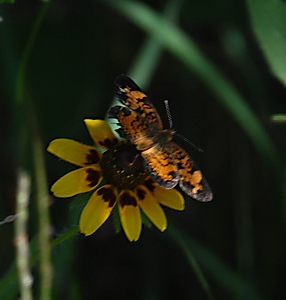 Pearl Crescent on Brown-eyed Susan
Pearl Crescent on Brown-eyed Susan
I was lucky to spot this one and get a half-decent grab shot of it. Brown-eyed Susan is also a favorite of other insects, such as grasshopper instars:
Another important native-plant increaser on the place are the gentian-family “pinks”. I didn’t find Meadow Pink (Sabatia campestris) this year–probably due to the dry spring–but the dryland pink-flowered gentians have continued to increase. I think we have both local species–Lady Bird’s Centaury, Centaurium texense, and Rosita, Centaurium calycosum, but I’m not sure–to me, the pictures at the Wildflower Center’s plant database site look very much alike. The plants do have two forms, one I think looks like a nosegay, with a very rounded head of rosy pink flowers:
The other has a more open, “loose” or “straggly” flower arrangement that doesn’t form dense little mounds of pink, but the flowers are the same color, same size, same form:
Both grow in the lower sparser grass of thin-soiled areas, and when in full bloom, make a most attractive haze of pink. These are small plants, not nearly as big as Coreopsis or Brown-eyed Susan, but you can’t miss them when they’re in bloom.
Forbs (non-grass, non-woody plants in grasslands) are an important part of the prairie ecosystem and we’re lucky that so many of the native forbs have survived on our place and are coming back.
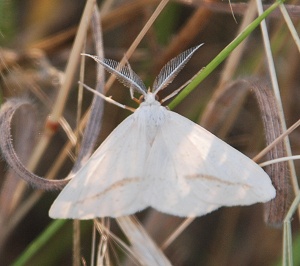
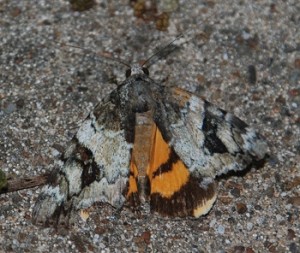
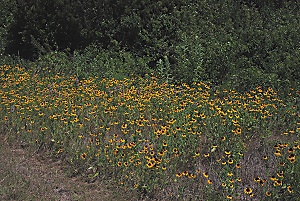
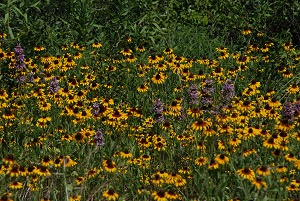
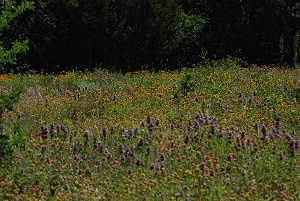
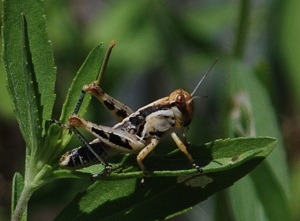
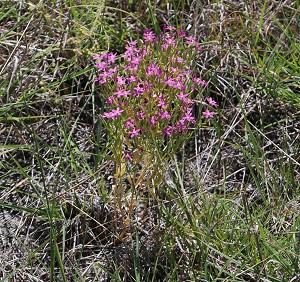
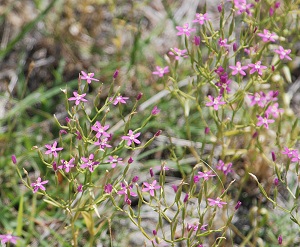
Comment by ajlr — June 7, 2010 @ 2:40 pm
That’s a very muscular-looking grasshopper!
I love the Brown-eyed Susans. The two or three rudbeckia varieties I have here, having grown them from seed (from here http://thompsonandmorgan.com/seeds1/group/rudbeckia.html), have perhaps all been bred from your native? The butterflies here certainly appreciate them.
Comment by elizabeth — June 7, 2010 @ 3:37 pm
Oddly enough, the grasshopper instars often look more muscular than the adults. Not true of the katydid instars, which are more gracile. And yet both are in Orthoptera.
R. hirta, our Brown-eyed Susans, is a species with a lot of geographic spread. I’m sure that the R. hirta cultivars were taken from “somewhere” in the U.S. prairie states, but don’t know which. It was collected early, I do know that, and a lot of plant materials were taken to Europe for cultivation and development.
Comment by Joy K. — June 11, 2010 @ 11:35 am
I love all of the tiny little flowers that bloom at once to make a colored haze on the ground.
Comment by Martin LaBar — June 12, 2010 @ 7:10 pm
That’s great about the Connubial underwing discovery.